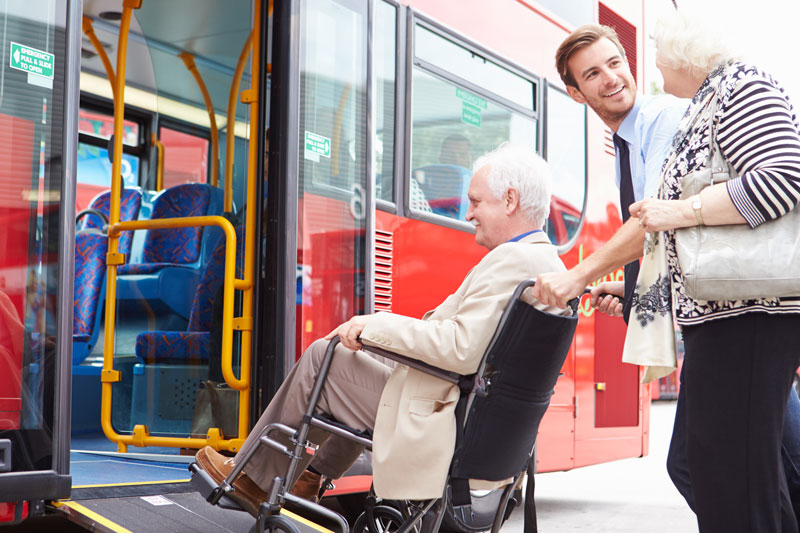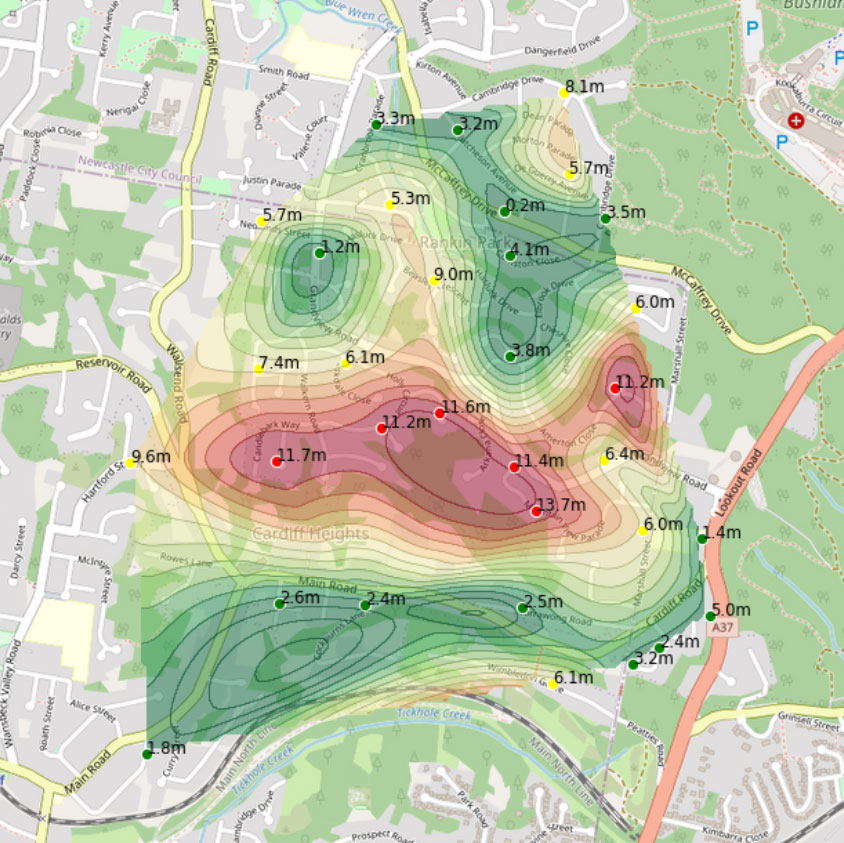“Daddy, why did the bus just kneel down?”
A simple question from my inquisitive daughter, and one that goes right to the heart of Public Transport.
In the space of one (very exciting) bus trip recently, my daughter was exposed to some of the best of Public Transport—a short walk to the bus stop around the corner, the bus turning up on time, the bus ‘kneeling’ to pick up an elderly shopper, and even the driver assisting a wheelchair-bound passenger with the in-built, cleverly hidden wheelchair ramp.

And while this was both a fantastic opportunity to talk to my daughter about equity in transport (and design principles) it got me thinking.
Apart from us and the two other passengers mentioned, why did only one other person get on? Why is a 40-seater bus travelling along a major route on a Saturday morning and not being used more?
So I thought I’d take a look at each of the positives of the experience we had and see if I can find some insight there.
1. A short walk to the bus stop around the corner
We live in a beautiful, hilly part of Newcastle, Australia, with close access to two main roads. For me to get to work, or the beach, it’s a simple two minute walk down our steep driveway, around the corner, up a short but steep hill (huge according to my daughter) and across the street I can hop on the bus and get delivered right outside the office door.
While it’s easy for me to get to the bus stop, I can’t imagine that it would be so enjoyable for some of my elderly neighbours—there’s no footpaths, the gutters are high and the road isn’t very smooth. While I love the visual appeal of no fences and no footpaths along my street, it’s certainly not the easiest for those with mobility challenges.
Beyond the (minor to me) challenges of getting to the bus stop, I’m actually quite fortunate.
The bus stop I use is at the top of the hill and is a catchall bus stop for the area. Other people in my neighbourhood have to walk over a kilometre, through hilly terrain, to get to their nearest stop. Unfortunately for a lot of people this is just too much to achieve, especially for regular travel.
I brought this up to a colleague who happened to be working on a PTAL (Public Transport Accessibility Level) mapping project. I borrowed his mapping tool and took a look at my suburb:

Excerpt from a Public Transport usefulness analysis of New Lambton Heights area showing variability of access. Measurements with the tool include walking distance, useful bus frequency, comparative driving time, demographics, etc. This output highlights the inequity of access within a small zone.
It confirmed what I thought.
For some of us who are able bodied and close to a bus stop, Public Transport is really quite useful. But for those of us who aren’t quite as lucky with mobility or location, and who want to engage with the local facilities, shopping centres and so on, the current Public Transport network really leaves a lot to be desired.
2. The bus turning up on time
Live bus tracking—how good is that?
Timetables work well—when they can be met. When they can’t be met, for those of us with some level of travel anxiety, knowing exactly where the bus is, and whether you’ve missed it, can convert a potentially stressful situation into a nice, relaxed one.
Even when the bus is late, more often than not just knowing exactly when it is arriving goes a long way to the enjoyment of the journey, and for the rest of the day.
In general, on-time running is pretty good (despite public perception). Take a look for yourself.
Unfortunately, even when the bus does turn up on time it still may not be very useful. Particularly in lower density and rural areas, the frequency and timing of services can result in very low attractiveness for some potential users. Balancing frequency and coverage is a perpetual challenge for transport planners and schedulers—I don’t envy them.
In this case, the timetable worked just fine for me, but on other occasions it doesn’t. This is one of the reasons why Demand-Responsive or On-Demand transport is so popular at the moment. I’m not saying it works in every scenario, in every location—and some would argue it doesn’t work well at all—but I’ve seen good results from a number of implementations, especially when the target market, service design and community impacts are well defined.
In a few years, when my daughter is catching the bus to school and back, how will my overactive imagination cope?
Will I be able to track her every movement to and from school (and should I)? Will I at least know that she’s on her way and I can be ready to meet her? Will she be able to seamlessly transfer to a last mile shuttle? A timetable is a start, knowing where the bus is is better, but having a personalised and convenient service is wonderful—and who knows what amazing improvements in technology and service we will have in just a few years?
3. The bus kneeling to pick up an elderly shopper, and in-built ramps for wheelchair-bound passengers
Bus designs have improved significantly over the last number of decades since I was catching them to and from school. Ergonomic seats, accessible sections, removal of steps and even the capacity to kneel down and allow wheelchair-bound passengers to get on and off.
This was fascinating for my daughter and it made her happy knowing that Nanny and Grandpa could still take her on bus trips even when they are older and frail. And luckily for them, there is a bus stop at the end of their block and no hills in between.
For many, Public Transport is a lifeblood, and for those with mobility issues it is often the most convenient and appropriate option for moving around.
But let’s think bigger. In speaking with some passengers with mobility issues though, it is not necessarily the transport itself which is the most important component of the trip. What is lacking most is clarity of the services available and accessibility of the destination area itself.
What would help greatly is improved visibility for the passenger so that they have confidence that they will not be left stranded at their destination bus stop, and that they will be able to safely access the community. Accessibility mapping services such as WheelMap, AXSMap and Accessibility in the City provide great comfort and need to be supported and extended.
Integrating all of these elements of an individual’s journey should be the aim of any truly equitable Mobility as a Service (MaaS) initiative.
4. Why did the bus only pick up one other passenger?
Hmmmm...that old chestnut. I wish I knew—I’d be the most popular person around!
Transport patronage is consistently declining, while passenger expectations are simultaneously increasing. The balance between cost, convenience and appropriateness is being tested like never before.
My daughter thought it was great, she had the whole bus pretty much to herself. I don’t yet want to introduce the “use of taxpayers’ money” type discussions, but I was certainly thinking about it! The bus came pretty much to my door and dropped us off where we wanted to go—a really useful service. So why weren’t other people using it?
Of course there are as many possible reasons as there are people trying to find them. I won’t pretend to know the answers, but I am interested in some of the possible solutions that have been proposed, and are being tested.
One in particular that has me interested is the idea of working in partnership between commercial bus operators and community transport Operators.
The societal and economic impact of community transport has been recognised (not widely enough) as being very beneficial—according to CTAUK, community transport can save the Health system over £1 billion every year. Given that community transport operators are focussed on ensuring equitable access to society for their clients, what are the opportunities to work together with the broader transport network?
There are different challenges in different areas, but surely pooling our resources and combining our efforts could create beneficial outcomes for everyone concerned.
I know this will become increasingly front of mind as my parents age, and I want to see them having the best possible access to continue their vibrant contribution to their community. Beyond that I hope I will see a well-supported and well-patronised public service through the future.

So what does this all mean?
Well, to a 9-year-old girl excited to take a trip on the bus, it’s all very interesting and by explaining things like “Nanny can’t walk very far, so she can’t really take the bus unless the bus comes to her,” she can start to understand why equity in transportation is so important.
For me personally, the interesting experience was a great opportunity to reflect on the way I get around town, and also what I do for a living. I’ve decided to do my part in bumping up the patronage numbers in my region and help support Public Transport as much as I can.
Professionally, I’m really encouraged by the work Liftango is doing both in rural areas and also alongside community transport operators, both of which are front and centre for transport inequity.
The more equitable and accessible we can make our communities the better our society will be.
%20(1).jpg)
